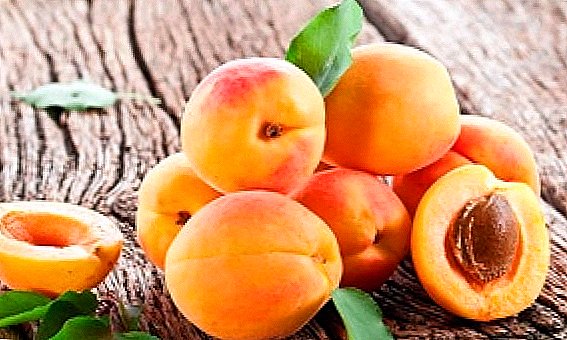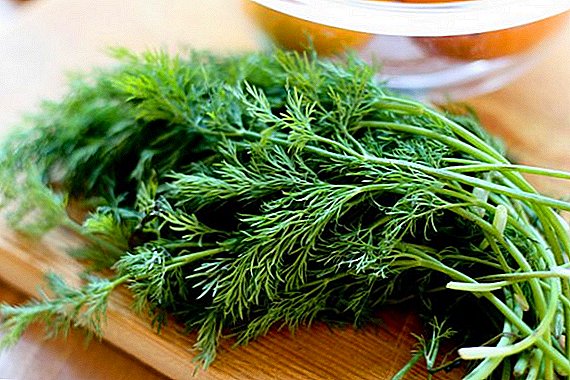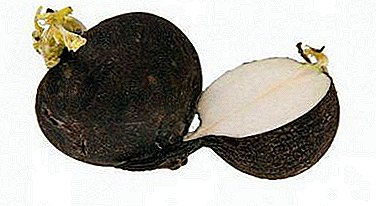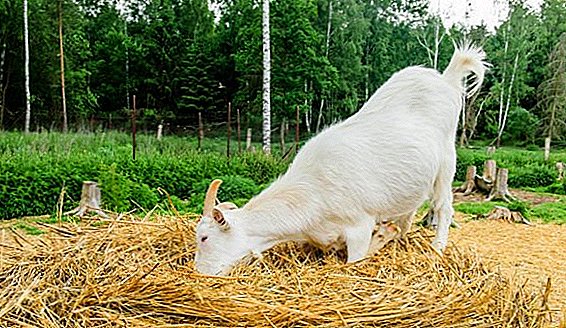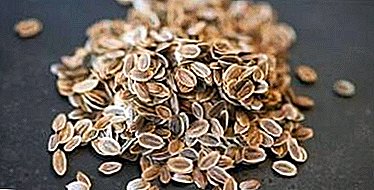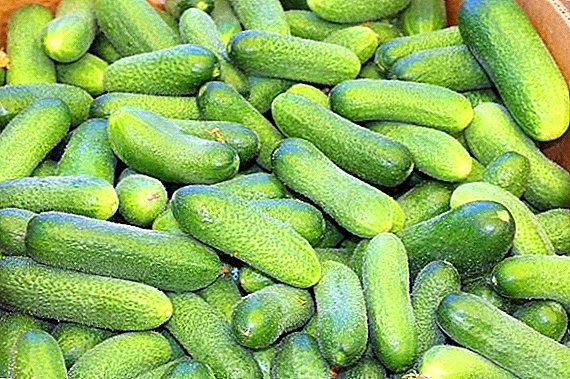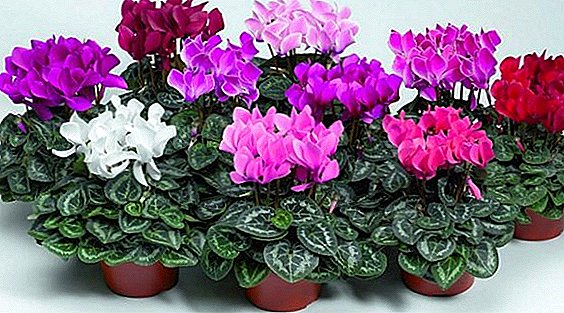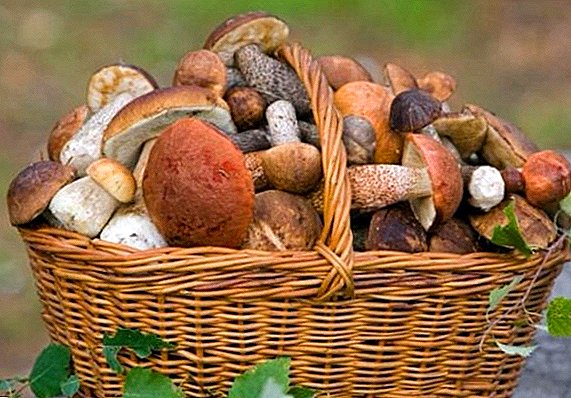 The spring months are not traditional for mushroom picking, although at this time more than 60 species are suitable for human consumption. In the spring, the mushrooms begin to appear immediately after the snow melts, some grow exclusively until summer, while others continue to delight with the harvest even at the onset of autumn. On what types of mushrooms can be collected in May, let's talk further.
The spring months are not traditional for mushroom picking, although at this time more than 60 species are suitable for human consumption. In the spring, the mushrooms begin to appear immediately after the snow melts, some grow exclusively until summer, while others continue to delight with the harvest even at the onset of autumn. On what types of mushrooms can be collected in May, let's talk further.
Morel
Considered conditional edible mushroom, as it requires pre-cooking for 15 minutes before further heat treatment. Raw morels do not have a pronounced taste and smell, but when cooked, their aroma and taste are very good.  You can find this species in deciduous and coniferous forests on the edges, between trees, in mossy and burnt areas. Prefers soil humus or sandy, with a sufficient amount of moisture. It is often possible to detect morels along the roads and roads, on the cutting sites. In general, the area should be well lit by the sun.
You can find this species in deciduous and coniferous forests on the edges, between trees, in mossy and burnt areas. Prefers soil humus or sandy, with a sufficient amount of moisture. It is often possible to detect morels along the roads and roads, on the cutting sites. In general, the area should be well lit by the sun.  You can collect gifts from the forest from the beginning of April to the beginning of June. And if the winter is warm enough, then the first morels break through at the end of March. Sometimes the colonies of fungi grow in September-October. However, as soon as lush greenery appears in the spring, the growth of this species ends.
You can collect gifts from the forest from the beginning of April to the beginning of June. And if the winter is warm enough, then the first morels break through at the end of March. Sometimes the colonies of fungi grow in September-October. However, as soon as lush greenery appears in the spring, the growth of this species ends.
Important! The most favorable collection time is April. The growth of morels lasts only a couple of weeks, until the mass appearance of greenery, because it is important not to miss the collection season.
The mushroom belongs to the family of morels, the most common type is morel (real), but there are also other species: morel conic and delicacy, morel hat, morel thighfoot and semi-free glance. These species may slightly differ in the shape of the folds on the cap, the shape of the cap.  The cap of the ordinary morels may be spherical or oblong, with numerous indentations of various shapes. Color is different: from all shades of yellow and brown to gray-brown. The older the fungus, the darker the cap. Its size does not exceed 5-8 cm in height and 4-8 cm in diameter. The leg grows from 3 to 9 cm in diameter - up to 3 cm, painted in yellow or white. The hat and leg inside are empty, forming one common cavity.
The cap of the ordinary morels may be spherical or oblong, with numerous indentations of various shapes. Color is different: from all shades of yellow and brown to gray-brown. The older the fungus, the darker the cap. Its size does not exceed 5-8 cm in height and 4-8 cm in diameter. The leg grows from 3 to 9 cm in diameter - up to 3 cm, painted in yellow or white. The hat and leg inside are empty, forming one common cavity.
Learn more about the morel species and the differences from the lines.
You can cook any dishes from these spring mushrooms: in fried and stewed form they complement the side dishes well, they can be frozen, dried, and marinated.
Video: cooking morel
Lines
This mushroom is also conditionally edible, as fresh can cause severe poisoning with a fatal outcome. In the West, the mushroom is considered poisonous, in some countries it is forbidden to harvest.  On the territory of the former Soviet Union, the mushroom could be consumed, but only with preliminary heat treatment. When cooked it has a pleasant taste and aroma. Collection time is from April to May.
On the territory of the former Soviet Union, the mushroom could be consumed, but only with preliminary heat treatment. When cooked it has a pleasant taste and aroma. Collection time is from April to May.
Autumn lines to collect and use is not recommended.
You can find this species in deciduous and coniferous forests, on sandy soils. Mushrooms prefer edges, clearings, places for cutting down trees, can be found near the road.  The lines have a very unusual, expressive appearance. The hat is shapeless, very wrinkled and winding, it resembles a walnut, inside it is empty, the diameter is 2-10 cm. The color depends on environmental conditions and can vary from light brown to dark brown with a red tone. The stem is short and thick, the diameter and height are up to 3 cm, the color varies from white to cream, hollow. The edges of the cap are connected to the leg. The flesh is white, very fragile and tender.
The lines have a very unusual, expressive appearance. The hat is shapeless, very wrinkled and winding, it resembles a walnut, inside it is empty, the diameter is 2-10 cm. The color depends on environmental conditions and can vary from light brown to dark brown with a red tone. The stem is short and thick, the diameter and height are up to 3 cm, the color varies from white to cream, hollow. The edges of the cap are connected to the leg. The flesh is white, very fragile and tender.
Important! As part of the fungus there is a toxic substance gyromitrin, which destroys the central nervous system, liver and gastrointestinal tract. To detoxify the raw materials, boil it twice for at least 30 minutes, changing the water between sets. The broth in any case do not try, and poured. Since hiromitrin is volatile, the mushrooms can be dried for 6 months to allow the toxic substance to evaporate. Then you can cook the mushrooms according to the recipe.
You can cook any kind of food from this type: they are excellent for frying and stewing, they are used for salads, side dishes with cereals, added to meat and chicken.
Video: collection and preparation of lines
May mushroom
It is an edible and safe variety of mushrooms. However, not everyone likes their specific smell and taste; therefore, some simply adore this look, while others bypass it.  The smell of fresh fungus resembles the smell of moist flour (powdery smell), but some note the similarity with the aroma of cucumber or grass, the smell is very pronounced, specific. May mushroom, as the name implies, appears in the last spring month. It prefers an open, well-lit area - it grows in glades, edges of the medium of low grass, it is found even in city parks and flower beds, in general, it is not picky about the soil or terrain. With the onset of summer heat, the collection season ends.
The smell of fresh fungus resembles the smell of moist flour (powdery smell), but some note the similarity with the aroma of cucumber or grass, the smell is very pronounced, specific. May mushroom, as the name implies, appears in the last spring month. It prefers an open, well-lit area - it grows in glades, edges of the medium of low grass, it is found even in city parks and flower beds, in general, it is not picky about the soil or terrain. With the onset of summer heat, the collection season ends.  The hat and leg of this species are monophonic, painted in whitish or cream color. The cap is hemispherical in shape, with thin plates at the bottom. In diameter it can reach 3-10 cm. The leg is cylindrical, thicker downwards, short: in height - up to 8 cm, in diameter - up to 3 cm. The flesh is snow-white, dense, fleshy.
The hat and leg of this species are monophonic, painted in whitish or cream color. The cap is hemispherical in shape, with thin plates at the bottom. In diameter it can reach 3-10 cm. The leg is cylindrical, thicker downwards, short: in height - up to 8 cm, in diameter - up to 3 cm. The flesh is snow-white, dense, fleshy.
Read also about mushrooms-mushrooms: parsley (ryadovka gray), poplar rowing.
May Rowing - this is another name for this species. Like all representatives of the genus ryadovok, may mushroom grows in colonies, which are often called "witch circles".  When cooked, the mushroom acquires a stunning delicate taste and aroma. The most popular method of cooking is frying, but mushrooms are great for pickling, salting, drying. It goes well with meat dishes, added to salads and sauces.
When cooked, the mushroom acquires a stunning delicate taste and aroma. The most popular method of cooking is frying, but mushrooms are great for pickling, salting, drying. It goes well with meat dishes, added to salads and sauces.
Video: May ryadovka
Raincoat
Considered completely edibleHowever, only small young specimens should be eaten, which are characterized by a pleasant taste and aroma, snow-white, elastic flesh.
Check out the most popular edible types of mushrooms.
Over time, the pulp loses its taste properties, becomes friable and turns green. Because collected mushrooms can not be stored for a long time, they need to be cooked during the day. Rain should be collected at the end of spring or early summer, after precipitation.  Fruits in the second half of May, during the summer months until autumn. Raincoats prefer fertile soils and open terrain: they can be found on meadows, fields, pastures, forest edges and glades.
Fruits in the second half of May, during the summer months until autumn. Raincoats prefer fertile soils and open terrain: they can be found on meadows, fields, pastures, forest edges and glades.
Did you know? The record for spore emission is considered to be a raincoat: 7 trillion spores are ejected from the mushroom at a speed of 90 km / h.
There are several types of raincoats, which differ in size and shape of the cap. For example, the giant (giant) rain cover is extremely large - the weight can reach 10 kg, and the cap in diameter is 30-50 cm. The head is spherical in shape, the leg is either very short or missing. Spiked raincoats have a modest size: up to 6 cm in height, the surface is covered with small spikes up to 6 mm.  As it was mentioned earlier, the flesh of young representatives is snow-white, dense, but over time it loses its turgor, becoming gray, violet or greenish. Only young specimens are suitable for food. They are best used for drying, frying, extinguishing. They are an excellent filling for pies, complement salads and snacks. Boiling is not the best way to cook, as sipping a lot of water, mushrooms lose their shape.
As it was mentioned earlier, the flesh of young representatives is snow-white, dense, but over time it loses its turgor, becoming gray, violet or greenish. Only young specimens are suitable for food. They are best used for drying, frying, extinguishing. They are an excellent filling for pies, complement salads and snacks. Boiling is not the best way to cook, as sipping a lot of water, mushrooms lose their shape.
Video: fried raincoats
Tinder is sulfur-yellow
Refers to conditional edible mushrooms, before use, requires boiling for 40 minutes or frying. Also only young specimens are suitable for food, which were collected not on coniferous trees, but on deciduous trees.  They have a classic pleasant mushroom flavor and taste with sourness. This species is a tree-destroying parasite that most often affects oaks, birches, lindens, poplars and fruit trees.
They have a classic pleasant mushroom flavor and taste with sourness. This species is a tree-destroying parasite that most often affects oaks, birches, lindens, poplars and fruit trees.
It is interesting to read about other edible and poisonous mushrooms growing on trees.
On the territory of Russia and Ukraine grows from the end of May to the end of June. The most intense collection period is in the middle of June. You can meet them at a small height on the trunks or stumps.  At the initial stage of development, tinder is a drop-like mass of a saturated yellow or orange color. Over time, the body of the fungus hardens, acquires a typical shape, resembling an ear, the number of pseudo-hats increases. At the base, the thickness of the fungus is 7-10 cm, the size of the caps varies from 10 to 40 cm. The caps are fan-shaped, wavy, with numerous blades. Since there can be many large caps on one leg, the mass of some representatives is 10 kg.
At the initial stage of development, tinder is a drop-like mass of a saturated yellow or orange color. Over time, the body of the fungus hardens, acquires a typical shape, resembling an ear, the number of pseudo-hats increases. At the base, the thickness of the fungus is 7-10 cm, the size of the caps varies from 10 to 40 cm. The caps are fan-shaped, wavy, with numerous blades. Since there can be many large caps on one leg, the mass of some representatives is 10 kg.
Did you know? Most of the fungus is located underground and hidden from our eyes. Mycelium can reach impressive size and extend to hundreds of square kilometers under the ground. For example, in the state of Oregon found a mycelium of nearly 1,000 hectares, weighing hundreds of tons.
Polypore has a snow-white, brittle, tender and juicy flesh. Well preserved when frozen, it can also be used for pickling, salting and drying. Popular cooking methods are frying and stewing. You can make mince from a tinder of sulfur-yellow for filling pies, adding to casseroles.
We advise you to get acquainted with the technology of harvesting mushrooms: salting, pickling, drying, freezing.
Video: collecting and cooking tinder
Brownberry
It is a completely edible mushroom, safe to eat. It has a talking name, from which it is clear that it is possible to find this mushroom in deciduous and mixed forests, but birch groves are a favorite place of growth. It prefers high humidity of soil and air, therefore it often “settles” near water bodies and in swampy areas. Collars can be collected from the end of May and throughout the summer. This type is highly valued for its excellent taste, composition and flavor.  There are more than 40 species of this fungus, but the differences between them are minor. The color of the fungus varies from light brown to gray-black. Cap size - up to 15 cm, hemispherical shape, with high humidity covered with mucous membrane. The foot can reach 3-15 cm in height, up to 4 cm in diameter, cylindrical, wider downwards and scaly to the bottom.
There are more than 40 species of this fungus, but the differences between them are minor. The color of the fungus varies from light brown to gray-black. Cap size - up to 15 cm, hemispherical shape, with high humidity covered with mucous membrane. The foot can reach 3-15 cm in height, up to 4 cm in diameter, cylindrical, wider downwards and scaly to the bottom.  The flesh of this species is colored white, does not have a special smell and taste, it is very soft. Mushrooms are characterized by rapid growth: a week after the appearance, they reach maximum sizes and begin to age, while the flesh becomes loose, watery, and loses its elasticity. That is why only young, elastic specimens are suitable for food.
The flesh of this species is colored white, does not have a special smell and taste, it is very soft. Mushrooms are characterized by rapid growth: a week after the appearance, they reach maximum sizes and begin to age, while the flesh becomes loose, watery, and loses its elasticity. That is why only young, elastic specimens are suitable for food.
Learn more about the varieties and benefits of boletus.
Brownberry has a universal use in cooking. Cooking, stewing, frying, harvesting for the winter by salting, pickling and drying are allowed among cooking methods. Brownberry is great for first and second courses, it can be an independent snack or an ingredient in salads. Used for filling baking, cooking sauce, sauces.
Video: cooking boletus
Champignon
Perhaps the most popular and familiar view. Delicious and fragrant edible mushroom. Massively grown in greenhouses, but in natural conditions it grows on European territory, in countries of Asia, Africa and America.  Prefers rich, fertile soil with a high moisture content. Sometimes it can grow on the bark of trees, anthills, in gardens and parks. Harvest season lasts from the second half of May until autumn.
Prefers rich, fertile soil with a high moisture content. Sometimes it can grow on the bark of trees, anthills, in gardens and parks. Harvest season lasts from the second half of May until autumn.
Did you know? The first greenhouses for growing mushrooms appeared on the territory of France in the 1750s.
The cap of the mushroom in the shape of a hemisphere is from 6 to 16 cm in diameter, dry, can be velvety or scaly. The leg reaches 4-10 cm, cylindrical in shape, downward slightly widened, even, in the middle divided by a wide ring. The color of the legs and the hat is the same: it can be white, cream with a light yellow or rozovinkoy.  In young specimens, the plate is white, with age they turn brown or brown. The flesh is soft, soft, snow-white, at the places of breaking and pressing, and also becomes pink when oxidized in air.
In young specimens, the plate is white, with age they turn brown or brown. The flesh is soft, soft, snow-white, at the places of breaking and pressing, and also becomes pink when oxidized in air.
It is interesting to read about champignons: the benefits and harm to the body, freezing in the home refrigerator, the technology of growing at home.
The most cultivated kind of champignon, familiar to all, is Sh. Dvuhporyovy (Agaricus bisporus). Edible are also two-circular, field, common, forest species. Dangerous species - flat-hipped and champignon yellow-skinned, or reddish.
Champignons can be eaten raw without any health effects. Prepare the mushrooms in any way. They are suitable for soups, broths, side dishes. They can also be fried, stewed and baked. Some believe that mushroom taste is not sufficiently pronounced in champignons, because often this type of mushroom is prepared with the addition of spices, seasonings, herbs and garlic.
Video: forest champignons
In general, spring months are an excellent period for collecting delicious forest gifts. If you do not miss the moment, be attentive and persistent, you can collect a good harvest of useful forest gifts.



